Poison ivy and poison oak produce a painful, itchy rash in most people. The oil from the plant clings to the skin and causes a skin reaction. Unfortunately, most people spread the oil before they realize what the problem is. That little itch gets scratched and the oil is transferred to other parts of the body, becoming a major itch.
While the rash isn’t contagious, the oil does spread easily. It can stick to your clothes, tools, and other surfaces to cause new reactions later. So, what can be done to stop the rash and the horrible itch? Here are a few natural treatments that work for poison ivy and poison oak.
Dress for the Job
Unfortunately, many people don’t recognize poison ivy or poison oak until they are already in contact. So, it may be too late for this suggestion. If you are going out to get rid of a patch of poison ivy or poison oak, cover up as much skin as possible. Wear long pants, socks, boots, long-sleeved shirt, and face-covering if available. Then wash your clothes thoroughly when you are done along with your tools and anything that may have come into contact with the plant.
Clean the Area Completely
Washing the oil away is necessary to stop further rashes. Unfortunately, the oil clings to the skin well, so you need to wash the skin thoroughly with soapy water or rubbing alcohol. Your best strategy is to rub down affected areas with rubbing alcohol, then immediately take a shower and scrub every part of your body. This will help make sure you didn’t miss a spot. Washing the skin won’t stop a rash in an exposed area, but it will remove the oil so that it doesn’t spread and hopefully make your reaction less severe.
Jewelweed
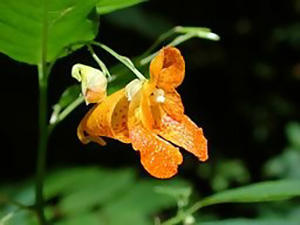 Jewelweed plant often grows near poison ivy, so look around the area to see if this plant is nearby. It is known for its soothing properties and is a very effective treatment for poison ivy, poison oak, stinging nettle, or any other plant induced rashes. It is believed that jewelweed counters the chemicals in the plant that cause the irritation.
Jewelweed plant often grows near poison ivy, so look around the area to see if this plant is nearby. It is known for its soothing properties and is a very effective treatment for poison ivy, poison oak, stinging nettle, or any other plant induced rashes. It is believed that jewelweed counters the chemicals in the plant that cause the irritation.
I have experienced good results using jewelweed for poison ivy and for other skin rashes. You can use it to make soap, salves, or lotion. It helps the rash clear up quickly, much faster than it would on its own.
To use the plant, slice the stem open and rub the sap onto exposed skin. You can also make an infusion by brewing chopped jewelweed in boiling water until it turns dark orange. Strain the infusion and pour it into an ice cube tray and freeze. Rub the affected area with the jewelweed cube to soothe the skin and help relieve the rash.
Related: 12 Wild Medicinal Plants You Should Harvest This Fall
Relieve Pain and Itching with an Oatmeal Soak
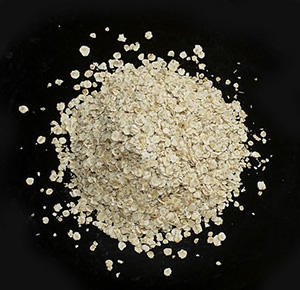 Soaking your rash in a cool bath containing oatmeal or oatmeal-based products is soothing and helps relieve the itching. You can make an oatmeal bath by grinding a cup of dry oatmeal in the blender. Wrap the powder in a clean cloth and tie it under the stream of running water. Fill the tub with cool water and soak for about 30 minutes.
Soaking your rash in a cool bath containing oatmeal or oatmeal-based products is soothing and helps relieve the itching. You can make an oatmeal bath by grinding a cup of dry oatmeal in the blender. Wrap the powder in a clean cloth and tie it under the stream of running water. Fill the tub with cool water and soak for about 30 minutes.
Alternately, apply a cool oatmeal compress several times a day or make a paste of ground oatmeal and water. Apply the paste in a thin layer to the affected area. Let the paste dry on the skin before washing it away. Use several times a day, as needed to relieve the itch.
Either method helps dry up the blisters so that they heal faster. Expect the rash to take two to three weeks to heal, however.
Calamine Lotion
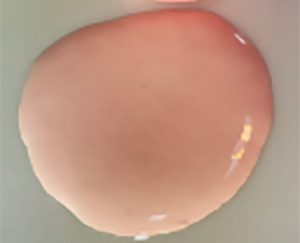 Calamine lotion is a commercial product made from a century’s old recipe. Today’s version usually contains benedryl, which is also helpful for allergic reactions and zinc oxide which is good for the skin. Calamine lotion has a drying effect on the blisters and relieves itching. Let the lotion dry in place and leave it on the skin if possible.
Calamine lotion is a commercial product made from a century’s old recipe. Today’s version usually contains benedryl, which is also helpful for allergic reactions and zinc oxide which is good for the skin. Calamine lotion has a drying effect on the blisters and relieves itching. Let the lotion dry in place and leave it on the skin if possible.
Bentonite Clay
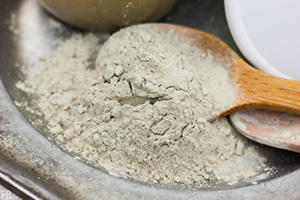 Bentonite clay or whatever clay you have available, applied as a paste, is also drying. Like calamine lotion, it draws moisture and toxins from the blister and helps relieve itching.
Bentonite clay or whatever clay you have available, applied as a paste, is also drying. Like calamine lotion, it draws moisture and toxins from the blister and helps relieve itching.
To use clay for relief of poison ivy or poison oak rash, mix a cup of clay with 1 teaspoon of salt, a few drops of peppermint oil, and enough water to form a smooth paste. Spread a thin layer on the rash and leave it in place until it dries, at least 20 to 30 minutes. Rinse it off and re-apply another layer. Store the remaining paste in a plastic bag in the refrigerator for future use.
Related: 15 Survival Uses for Bentonite Clay
Baking Soda Paste
A paste made from baking soda and just enough water to moisten it can also help relieve the itching. Baking soda helps draw out the toxins and neutralize the oil while also relieving the itch and pain. Apply the paste to the rash and let it dry in place. Peel off the dry paste and apply another layer. Repeat this process until you experience relief from the itching and pain.
To make this paste even better, mix the baking soda with cold coffee and following the process. Coffee contains chlorogenic acid which helps reduce the swelling and pain.
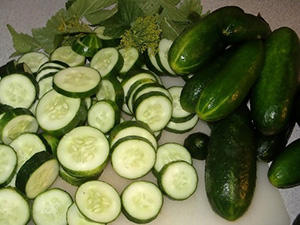
Cucumber Slices
Cucumber slices placed on the rash are soothing.
I sometimes blend cucumber into pulp and use the pulp to make a poultice.
The result is cooling and relieves the itch temporarily.
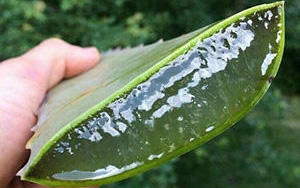 Aloe Vera Gel
Aloe Vera Gel
Aloe is very soothing on any kind of skin rash or irritation.
Slit the aloe leaf open and scrape out the gel inside to use as a cooling remedy for poison ivy or poison oak rashes. It is also a good way to soothe the skin after any of the above treatments.
Tea Tree Oil
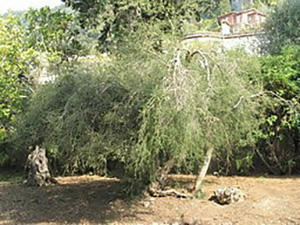 Tea tree oil is an anti-inflammatory that helps relieve the rash caused by exposure to poison ivy and poison oak.
Tea tree oil is an anti-inflammatory that helps relieve the rash caused by exposure to poison ivy and poison oak.
If you are using an undiluted oil, dilute it a ratio of 1 part tea tree oil to 9 parts carrier oil (olive oil or coconut oil). Apply a thin layer of the diluted oil to the affected skin.
Apple Cider Vinegar or Lemon Juice
Apple cider vinegar and lemon juice are both astringents that help relieve the pain and itching of poison ivy and poison oak. Both can be used in the same way. Dab a cotton ball into the vinegar or lemon juice and apply it directly to the rash or use the vinegar or juice to make a paste with baking soda. Apply it gently and allow it to dry in place. When it dries, apply more vinegar or juice with a spray bottle or cotton ball.
You may also like:
 9 Natural Remedies To Heal Wounds Faster
9 Natural Remedies To Heal Wounds Faster
Engineers Call This The “Solar Panel Killer” (Video)
How To Identify Poison Ivy Growing In Your Backyard
The 5 Most Common Edible Weeds In Your State
Scientists Find Smelling Rosemary Can Increase Memory By 75%

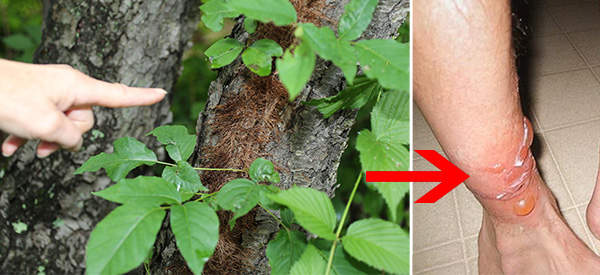
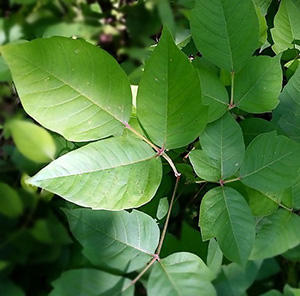













I have been successful in using a mild bleach solution when exposed to poison ivy. Pour a small amount (1 -2 tablespoons) of bleach in a hand basin off tepid water, I usually stand in the shower and rinse the exposed area with the bleach solution, then wash the bleach solution off right away in the shower with soap and tepid water. Basically, the bleach dissolves your thin outer layer of dead skin, effectively removing the oil of the poison ivy or oak from the skin. (That is why your skin feels so soft and slippery after it is exposed to bleach water.) The sooner you do this after being exposed, the better but I have done it a half an hour later and it still worked.
(My neighbor has a pool and she just splashes pool water on the exposed area.)
If you do develop the blisters, mix a solution of one part apple cider vinegar and one part rubbing alcohol. Rub this mixture on the effected area repeatedly until the blisters are gone. Again the sooner the better. You can rub the mixture on as often as you wish. I use a cotton ball to apply it. Basically the rubbing alcohol the dries the blister and the apple cider vinegar heals it. The mixture also soothes the itching.
If you don’t have anything else at the time, just rub an ice cube over the blisters, that helps to numb it for a while so it doesn’t itch so much.
Also, for mosquito bites ( or other minor bug bites) rub a bar of soap over the bite and leave the soap layer on, do not rinse it off. Alternately, rub cheap underarm deodorant (basically “wax” and rubbing alcohol) over the bite to control the itch. Air does not get to the bite and the itch lessens. Do not scratch and most people should be fine shortly.
Also, for bee, wasp, hornet, or mosquito bites slice open an onion and rub the juice of the onion on the area that has been stung (after removing the stinger if it was a bee). Reapply as needed or put a slice of onion under a band aid and leave it on the bite for a while. Put a fresh slice of onion on again later if needed. The sooner the better. My father kept bees, so I know this works. I hope this helps you.
For poison ivy exposure, the best ever remedy I’ve tried has been a wash made from ragweed. NEVER, EVER DRINK THE STUFF. It’s poisonous. BUT, put chopped leaves in hot water and steep until cool. Strain. After washing the area with tar soap or the soap made for poison ivy (better than regular soap) use a soft cloth or gauze to wash the affected area and surrounding ones. It dries the blisters; seems to neutralize the chemicals that bond to the skin; and eases the itching. Add it to the washing machine when washing the clothes because if it’s on your clothing, the poison ivy oils also bond to the cloth. Then clean the tub thoroughly. Be careful when washing yourself because as the oils are washed off – especially early on – they can run down the body and re-bond in different parts. Unless you wash with tar soap or the techno soap made for poison ivy. Even then I’m careful. Clothing and washing and touching the exposed blisters then other parts of the body in the early stages of exposure are how it’s spread. It takes about 10-14 days for the oils in the poison ivy to break down. Jewel weed, ragweed, tar soap, and the technical soap you buy at sports stores all seem to speed that timeline up a bit. Your other listed methods are soothing and drying to the blisters but don’t seem to help break the oils down very much. I’m a retired herbalist of 30-some years and allergic to poison ivy. Just for credibility sake.
Thank you for the poison ivy relief tips!
I had no idea all these different things could be used for this. Does anyone else know of other stuff? The hard part for me is identifying the poison ivy. It looks like everything else growing around here; I just can’t tell a difference! And it looks so benign! Not like say Virginia Creeper, which looks like it should give a worse rash than poison ivy!
I learned this when volunteering at a local hospital. I was desperate and did use this, as crazy as it seemed. CERTO for canning. Take a couple tablespoons internally,(it’s bitter) use whatever you like on the outside. The poison oak will start to dry up the next day. Keep taking i. Use it as a preventative. I seem to get poison oak by just walking by the plant, and I live in the country. I was totally shocked that this works, I have it all year long at my home.
Elaine: I have trouble identifying with any degree of certainty just exactly what is poison ivy and poison oak. Sometime ago I was inspecting a rural patch that seemed overrun with poison oak. Now I don’t know if he was b.s.ing me or not. When I mentioned all the poison oak he said that while it looked like poison oak it actually was a plant called “rabbit weed.”
My course of action if I see anything that even remotely resembles either of the two noxious weeds to to avoid it, not relying on either my limited botanical expertise nor some other person who, while claiming such knowledge, perhaps has no more expertise than I.
LCC
Here is a thought about unknown plants you want identified . Take a good clear picture of the plant or plants and go to a local nursery and talk with them and show them the picture That is IF you have a local nursery……or even a local farmer might have good knowledge….Does the county you live have a County Agriculture Agent? If they do contact him or her….
Here is a reputable link just enter your zipcode.
and search around.
https://www.audubon.org/native-plants
I hope this helps and Good Luck!
Elaine, if you’re in any doubt as to whether something is poison ivy, the safest maxim is, “Leaves of three, let it be!” Of course there are other three-leafed plants–other characteristics will make the differentiation–but you’ll never get a rash from avoiding the safe ones!
Another warning–if there are pretty white berries in the fall, it’s probably poison ivy! A friend of mine picked some of those pretty white berries and tucked them into her fall window boxes… She never did THAT again!
Jewel weed leaf identification photo missing !
Elderberry usually grows next to poison ivy and is one of the best natural cures I know of….crush the leaves and rub on….
Everyone’s comments on cures for poison ivy are great. I wrote every single one down. I think these cures are used for poison oak also, which grows throughout the west coast. Thanks!
I was first exposed to poison ivy in 1975, my boss had me do something, and said, “You’re standing in a field of poison ivy.” Later, the owner of the home we were building said, “Do you get poison ivy?” I had waded in it & didn’t get it. I had not learned about progressive reaction, “No.” “Good, I have some roots for you to dig out.” I got it terribly. I used to put pure Bleach on it, and scrub with a scrub brush, hurt like hell, but got rid of the poison ivy, no fooling about for weeks. It also took the pigment where the poison ivy had affected me, which came back after a year or so.
I had a terrible reaction when I was younger. The best treatment for me was a paste of cornstarch and water. It cleared up the pustules in a week.
My mother was very susceptible to poison ivy. She always washed with Fels Naptha soap if she thought she had been exposed. She also would lather up the soap and apply the lather to the blisters and let the lather dry on the blisters to help dry up the rash.
She always washed clothing she wore when she thought she had been around poison ivy with Fels Naptha soap. During her lifetime it was available in bar form as well as soap chips. I think now you will have to search for it.
Also, not mentioned but reportedly very effective is Tecnu solutions sold in drug stores. Not available after the end of the world, but I would recommend adding it to your first aid supplies.
Of course, it is still available at Amazon. And I spelled naphtha incorrectly. The correct spelling is “naphtha.”
My Walmart and many grocery stores carry the Fels-Naptha bar soap. My mom always had a bar to rub on clothes stains and I continue to use to this day. : )
Was studying chemistry many decades ago when I happened to read the rhus oh the poison ivy/oak that caused the rash is alkaline. You titrate an alkaline substance with an acid & vinegar is an acid. So the next time I got into some poison ivy I by passed the soap (which is also alkaline) & wet a washcloth (soppy) with my apple cider vinegar & wiped everywhere I figured the poison ivy touched. LO & BEHOLD, it worked – no rash & it has continued to work every since.
Also recall talking to a roofer who said he broke out with bad poison ivy rash but after sweating heavy in hot roofing job next day his rash was gone. So apparently if you sweat a lot you can sweat the rhus out also, but haven’t checked this out. Prefer to titrate & avoid the rash.
There’s a YouTube video on how to remove urushiol which is the toxic component of poison plants, created by a scientist with years of related experience. He uses a colored grease which he says has similar properties in his demonstration. He shows that washing with normal soap, dishwashing detergent, and even the technical soap advertised for such removal is only slightly effective by itself. What makes all the difference is scrubbing with soap and a rough wash cloth. That removes almost all the oil and if done within an hour of exposure should significantly lessen the reaction. Of course once blisters have developed you should never roughly scrub damaged skin.
A few years ago, I had to go to my family doctor 5 times in one summer for poison ivy. The doctor said it gets in my bloodstream and goes all over my body. One person suggested I take a spoon full of diced garlic and drink tomato juice two or three times a day before or even after the itching and irritation starts. It works great! Seriously, IT WORKS GREAT. I have not had any problems with poison ivy or poison oak since I started treating it with garlic and tomato juice.
I wonder what would happen if you took that before you were even exposed?
also I was told to wash with Cold water. Hot water opens your pores allowing more poison in !!
I wonder what would happen if you took that before you were even exposed?
After cleaning, apply St. John’s Wort oil. I Have seen it very noticeably decrease a severe reaction in 6 hours and completely gone in 2 days. Apply every 6-8 hours.
When my girls were little I made a tea from Manzanita leaves and washed it over the rash, worked good but made them look like they were dirty, LOL. Some time later I learned to use liquid washer detergent full strength on the rash. It healed it within a day or two.
In addition to the various topicals (most of which I can vouch for, having been violently allergic from an early age!) the homeopathic Rhus Tox gives good results. (oral–small pills placed under the tongue.) I find it shortens the life and recovery of the blisters.
For itching–prior to any of the topicals, soak a washcloth in the hottest water you can safely stand, wring it out, and hold it on the affected area. It will itch like mad for a few seconds–then, relief, for as much as several hours. It may also result in the draining of the blisters–which, if you get the huge blisters I do, is also a relief! Just make sure they stay clean to avoid infection, as with any open blister.
I have had the good luck to spend a long life working and playing outdoors.I am highly allergic to poison ivy and learned early on to avoid any plant with 3 leaflets. Leaflets 3, let it be, is the old rhyme, plants like Virginia Creeper, Boxelder Maple seedlings, Cow-itch vine (Cissus incisa), Boston Ivy, etc can look like poison ivy but, because poison ivy is so common you want to avoid them all. And any hairy woody vine growing up a tree or wall.
Also, poison ivy is variable, poison ivy and oak can have leaflets with no indentations, leaflets with few indentations, or with many. It grows as a lush green vine, or a stand of thin woody trunks with a few leaflets three, as a thick, woody, hairy high climbing vine, or a beautiful vining mass covering the sides of old masonry buildings,often with spectacular fall color. It’s actually a pretty cool plant…and always has 3 leaflets.
Really interesting lot of treatments in the responses, the Certo is intriguing. In my experience, once you have it you are better off avoiding treatments that dry it out, drying the skin can intensify the blisters and cracking of a bad case. I just keep it clean and, to relieve the itch, run the hottest water I can stand over the rash, it feels great and zaps the nerves for a couple of hours. And Darwin Award winners who burn themselves with hot water are no concern of mine.
And if it’s not the end of the world and you have a bad case, go on down to the Doc In A Box and get a cortisone shot, best thing there is for lessening the reaction and speeding recovery.
I got poison ivy clearing the side of my sister’s back yard. I went out and bought some Calamine lotion and put it on my left arm. I was about to doctor up the right arm and I thought about plantain. I went outside picked some plantain and worked it into the affected area. I got over 4 hours relief from the plantain and only 1 1/2 hour relief from the Calamine lotion. I will stick to what works best for me… the plantain! Thank, Ask a Prepper, and I love that book!
As I posted in a response to another article about poison ivy, there is a survivalist out here on the left coast who claims to eat poison oak leaves in the spring when they are quite young. He says it gives him immunity against the poison oak rash. He claims that the Chumash, a local indian tribe used that method to gain immunity from poison oak and that they made baskets from poison oak vines.
Clergylady also responded and said that she remembered that from the time she spent living on an indian reservation in NorCal.
The whole idea almost give me a rash. I can’t imagine having a poison oak blistering of my esophagus. I am most certainly NOT recommending having a poison oak/ivy salad in the springtime.
The survivalist’s name is Christopher Nygeres (or a spelling close to that.) He has a website and has several publications for sale. He also runs urban survival classes where he teaches what weeds that grow in urban areas are suitable for munching in a survival situation.
Once again, so that there is no confusion. I definitely am NOT recommending eating poison oak or poison ivy leaves. If you are interested in that I strongly suggest you get in touch with Mr. Nygeres.
I live on 10 on so acres. When I first feel the sting and itch of any poison ivy or other skin irritating plant I hurry back to the house and pure gasoline over the effected area. usually this is my hands of arms. It always does the trick. If I’m real lucky I’m doing chainsaw work and the gas is within reach. For me this works every time.
I have used an old Pomo Native remedy for poison oak. It works but draws the poison out very rapidly, which can cause intense itching. I fix that by placing the affected area under hot RUNNING WATER and inducing endorphins to numb the area. I use a tea made of manzanita leaves (which also grows many times in close proximity to poison oak) cooled down. I use it only 2 times the first day and once the following day, and maybe once the third day. For itching I use the hot running water….
I use Family Dollar store brand of T-Gel shampoo to wash in when I even suspect I have been in or around Poison Ivy. My husband even washes in it, twice, after mowing grass or weedeating. I get it from him, his clothes and I get it very easily. This is the only known way I can keep from getting any Poison Ivy, to bathe in that Shampoo and have hubby bathe in it too.
I think it works so well, because it has Coal Tar in it for dandruff.
Zanfel! Its a miracle cure, heals it in about 2 days, immediate relief! Sold in drug stores…expensive but totally effective!
The best advice I’ve ever been given concerning poison oak came from a couple of “Search and Rescue” guys.
They have to take 2 tablespoons of Certo Liquid Pectin in a glass of grape juice 24 hours before going out into the field to prevent getting poison oak.
I tested their theory and sure enough, not a single spot of oak on me after practically crawling through the stuff.
They said it’s effectiveness generally lasts 3 to 4 .months. My first trip to the woods was in the late spring time. My last trip was at the end of summer and I did get a couple of spots that didn’t spread.
So for me, it was good for the summer season.
I’m extremely sensitive to the nasty stuff.
A friend told me to use a hair dryer on high heat to dry the oils. Blow the affected area until you just can’t take the heat anymore, do a different area, then come back and do it again until you are feeling the “burn”, move off for a minute or so, then heat it up a third time. Be careful not to actually burn the skin, just get it as hot as you can stand. If I do this on the first day, asap, then I don’t get a rash. Sometimes it burns, though, so use aloe vera afterwards to sooth your skin.
An old horse-lady taught me this after I rode a horse in her woods and got “poisoned”.
We had dairy goats, as well as cattle. When pastured, the goat ate poison ivy like it was candy. When any of us milked them, we’d get it from them and the leaves they were in. Dad had to milk them, but by end of summer, no more poison ivy, so maybe it wasn’t all bad. When I get it, the body reacts as if it had an infection. muscles swells and aches, and so on. I got the serum shots years ago and they still work.
I like salt water for poison ivy — it dries it out. Go swimming in the ocean — other than that make a mix of salt and water.
I like salt water for poison ivy — it dries it out. Go swimming in the ocean — other than that make a paste of salt and water.
Dishwashing Liquid and Lemon juice to Heal Poison Ivy
30 years ago, I was helping a man paint his farmhouse that was covered with untrimmed bushes and poison ivy (PI). I am very allergic to PI and always broke out in a rash. I had to move ladders up close to the house to paint up high and of course, got in to PI.
The guy I was working for told me to go to the kitchen and get the dishing soap by the sink. We walked over to the water hose next to the house and he told me to get both my arms and legs wet, pour some dish soap on my hands and soap up all the exposed skin just like a surgeon before surgery. By doing this, the soap removes the invisible plant oil “urushiol” from your skin that causes the rash. If you do this within 6 hours after exposure to PI, you will never breakout.
He also told me that when I got home to put all the clothes I was wearing that day into the washing machine with HOT water. This will remove the oil from your clothes.
Now, if you happen to miss a spot or did not wash your skin very good and you do get a rash. Get into a hot shower with dish soap and repeat the process. Also, applying fresh lemon juice to the rash will help to heal the rash a lot.
By following these protocols for the past 30 years, I have not had a serious outbreak of PI since!
Good video on the subject: How to never have a serious poison ivy rash again
https://www.youtube.com/watch?v=4oyoDRHpQK0